Panasonic of North America 96NKX-TGA939 UPCS Portable Tx Held to Ear User Manual
Panasonic Corporation of North America UPCS Portable Tx Held to Ear
User Manual
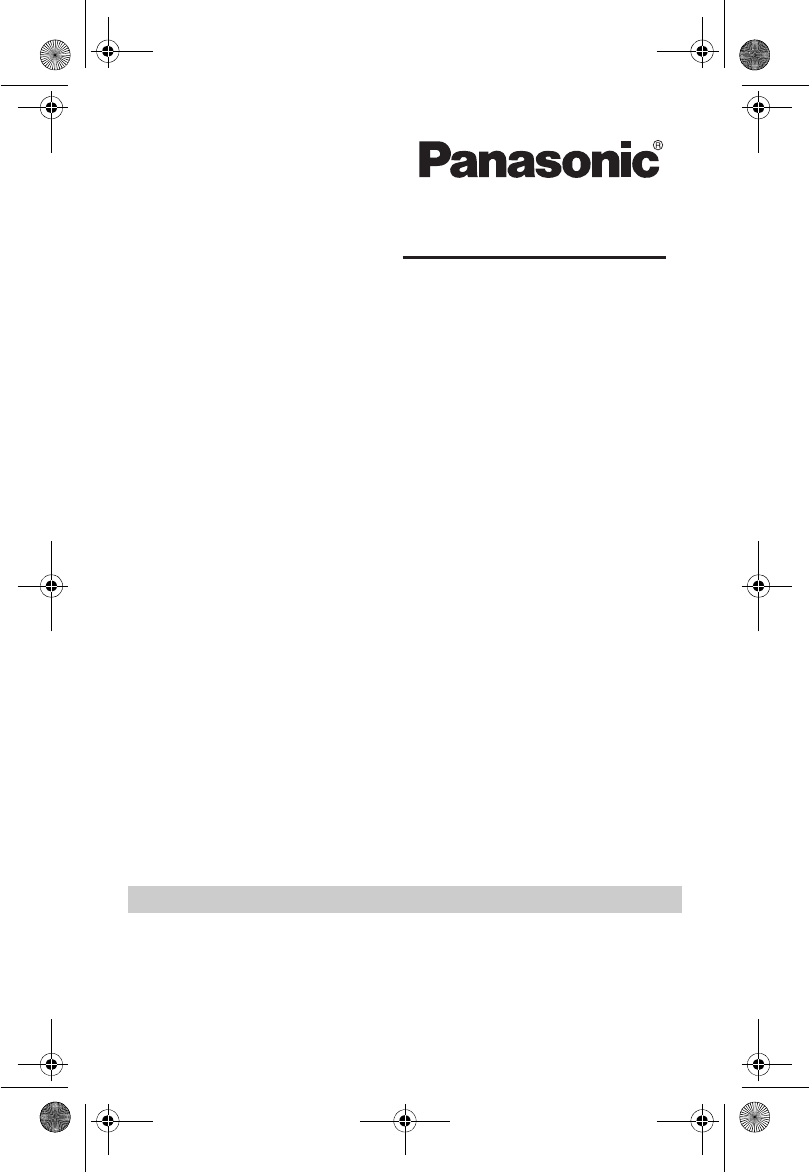
Temporary Confidential
This unit is compatible with Caller ID. You must subscribe to the appropriate
service offered by your service provider/telephone company.
Please read these operating instructions before using the unit and save
them for future reference.
Charge the handset batteries for about 7 hours before initial use.
Operating Instructions
Expandable Digital Corded/Cordless
Answering System
Model No. KX-TG9391
TG9391_Shinsei.book Page 1 Thursday, April 10, 2008 5:33 PM
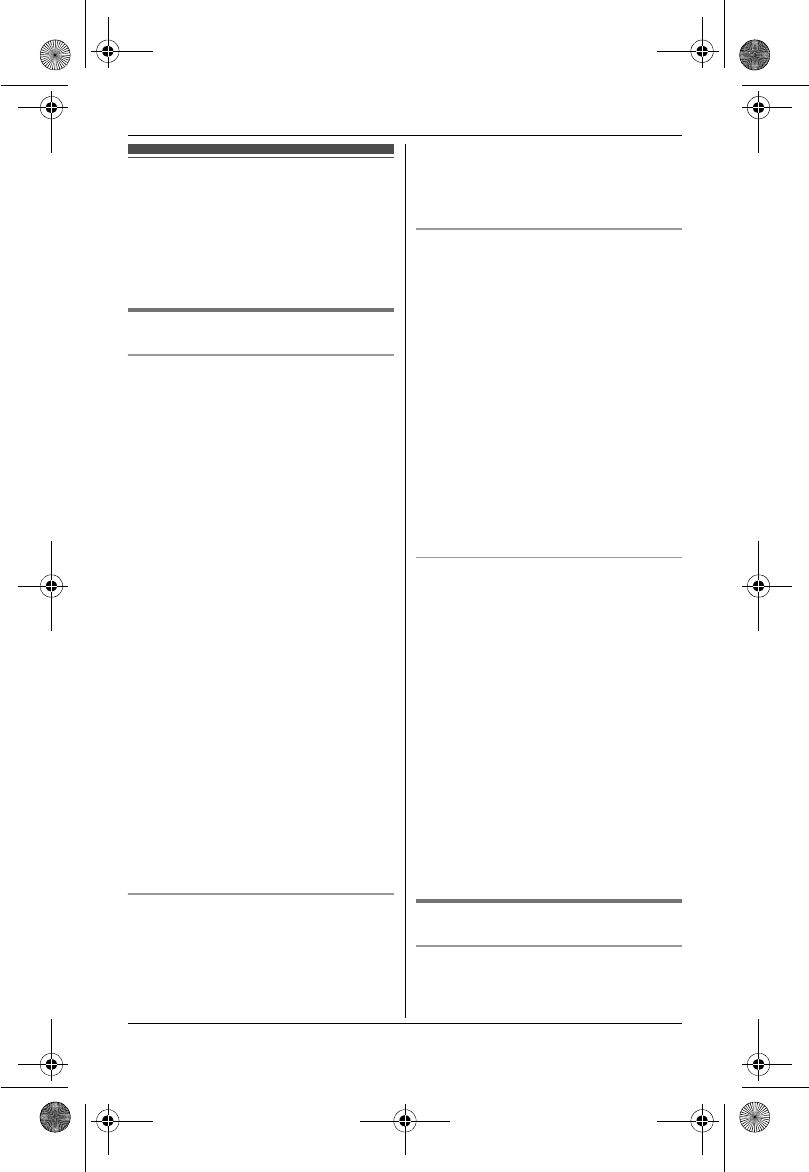
Temporary Confidential
2
For your safety
To prevent severe injury and loss of
life/property, read this section carefully
before using the product to ensure
proper and safe operation of your
product.
WARNING
Power connection
LUse only the power source marked on
the product.
LDo not overload power outlets and
extension cords. This can result in the
risk of fire or electric shock.
LCompletely insert the AC
adaptor/power plug into the power
outlet. Failure to do so may cause
electric shock and/or excessive heat
resulting in a fire.
LRegularly remove any dust, etc. from
the AC adaptor/power plug by pulling
it from the power outlet, then wiping
with a dry cloth. Accumulated dust
may cause an insulation defect from
moisture, etc. resulting in a fire.
LUnplug the product from power outlets
if it emits smoke, an abnormal smell,
or makes an unusual noise. These
conditions can cause fire or electric
shock. Confirm that smoke has
stopped emitting and contact the
Panasonic Call Center at 1-800-211-
PANA (1-800-211-7262).
LNever touch the plug with wet hands.
Danger of electric shock exists.
Installation
LTo prevent the risk of fire or electrical
shock, do not expose the product to
rain or any type of moisture.
LDo not place or use this product near
automatically controlled devices such
as automatic doors and fire alarms.
Radio waves emitted from this product
may cause such devices to
malfunction resulting in an accident.
Operating safeguards
LUnplug the product from power outlets
before cleaning. Do not use liquid or
aerosol cleaners.
LDo not disassemble the product.
LDo not spill liquids (detergents,
cleansers, etc.) onto the telephone
line cord plug, or allow it to become
wet at all. This may cause a fire. If the
telephone line cord plug becomes
wet, immediately pull it from the
telephone wall jack, and do not use.
LDo not excessively pull the corded
handset cord from the base unit. This
may cause the base unit to fall,
resulting in injury.
Medical
LConsult the manufacturer of any
personal medical devices, such as
pacemakers or hearing aids, to
determine if they are adequately
shielded from external RF (radio
frequency) energy. (The product
operates in the frequency range of
1.92 GHz to 1.93 GHz, and the RF
transmission power is 115 mW
(max.).)
LDo not use the product in health care
facilities if any regulations posted in
the area instruct you not to do so.
Hospitals or health care facilities may
be using equipment that could be
sensitive to external RF energy.
CAUTION
Installation and relocation
LNever install telephone wiring during
an electrical storm.
TG9391_Shinsei.book Page 2 Thursday, April 10, 2008 5:33 PM
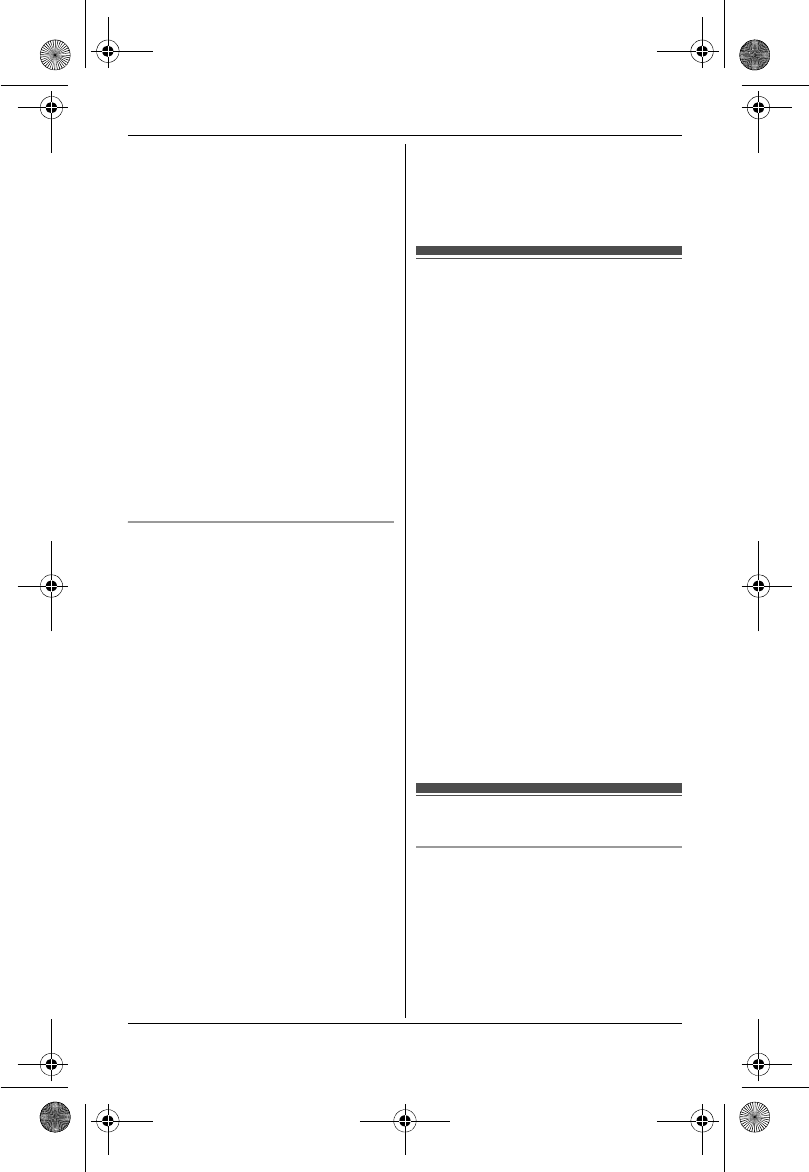
Temporary Confidential
3
LNever install telephone line jacks in
wet locations unless the jack is
specifically designed for wet
locations.
LNever touch uninsulated telephone
wires or terminals unless the
telephone line has been disconnected
at the network interface.
LUse caution when installing or
modifying telephone lines.
LThe AC adaptor is used as the main
disconnect device. Ensure that the AC
outlet is installed near the product and
is easily accessible.
LThis product is unable to make calls
when:
– the handset batteries need
recharging or have failed.
– there is a power failure.
Battery
LWe recommend using the batteries
noted on page xx. USE ONLY
rechargeable Ni-MH batteries AAA
(R03) size.
LDo not mix old and new batteries.
LDo not open or mutilate the batteries.
Released electrolyte from the
batteries is corrosive and may cause
burns or injury to the eyes or skin. The
electrolyte may be toxic if swallowed.
LExercise care when handling the
batteries. Do not allow conductive
materials such as rings, bracelets or
keys to touch the batteries, otherwise
a short circuit may cause the batteries
and/or the conductive material to
overheat and cause burns.
LCharge the batteries provided with or
identified for use with this product
only, in accordance with the
instructions and limitations specified
in this manual.
LOnly use a compatible base unit (or
charger) to charge the batteries. Do
not tamper with the base unit (or
charger). Failure to follow these
instructions may cause the batteries
to swell or explode.
Important safety
instructions
When using your product, basic safety
precautions should always be followed
to reduce the risk of fire, electric shock
and injury to persons, including the
following:
1. Do not use this product near water for
example, near a bathtub, washbowl,
kitchen sink or laundry tub, in a wet
basement or near a swimming pool.
2. Avoid using a telephone (other than a
cordless type) during an electrical
storm. There may be a remote risk of
electric shock from lightning.
3. Do not use the telephone to report a
gas leak in the vicinity of the leak.
4. Use only the power cord and
batteries indicated in this manual. Do
not dispose of batteries in a fire. They
may explode. Check with local codes
for possible special disposal
instructions.
SAVE THESE INSTRUCTIONS
For best performance
Base unit location/avoiding noise
The base unit and other compatible
Panasonic units use radio waves to
communicate with each other.
LFor maximum coverage and noise-
free communications, place your base
unit:
TG9391_Shinsei.book Page 3 Thursday, April 10, 2008 5:33 PM
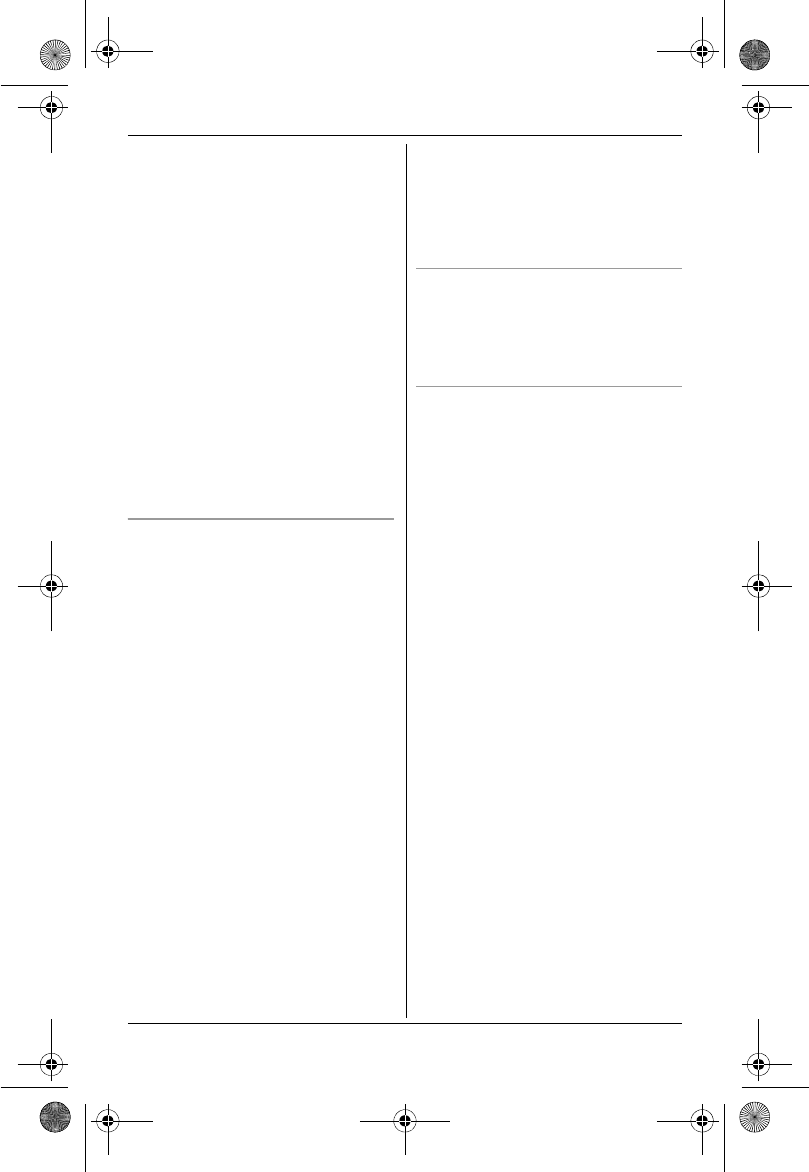
Temporary Confidential
4
– at a convenient, high, and central
location with no obstructions
between the handset and base unit
in an indoor environment.
– away from electronic appliances
such as TVs, radios, personal
computers, wireless devices or
other phones.
– avoid facing radio frequency
transmitters, such as external
antennas of mobile phone cell
stations (avoid putting the base unit
on a bay window or near a window).
LCoverage and voice quality depends
on the local environmental conditions.
LIf the reception for a base unit location
is not satisfactory, move the base unit
to another location for better
reception.
Environment
LKeep the product away from electrical
noise generating devices, such as
fluorescent lamps and motors.
LThe product should be kept free from
excessive smoke, dust, high
temperature, and vibration.
LThe product should not be exposed to
direct sunlight.
LDo not place heavy objects on the
power cord or top of the product.
LWhen you leave the product unused
for a long period of time, unplug the
product from the power outlet.
LThe product should be kept away from
heat sources such as heaters, kitchen
stoves, etc. It should not be placed in
rooms where the temperature is less
than 5 °C (41 °F) or greater than 40 °C
(104 °F). Damp basements should
also be avoided.
LThe maximum calling distance may be
shortened when the product is used in
the following places: Near obstacles
such as hills, tunnels, underground,
near metal objects such as wire
fences, etc.
LOperating the product near electrical
appliances may cause interference.
Move away from the electrical
appliances.
Routine care
LWipe the outer surface of the
product with a soft moist cloth.
LDo not use benzine, thinner, or any
abrasive powder.
Notice for product disposal, transfer,
or return
LThis product can store your
private/confidential information. To
protect your privacy/confidentiality, we
recommend that you erase the
information such as phonebook or
caller list entries from the memory
before you dispose of, transfer, or
return the product.
TG9391_Shinsei.book Page 4 Thursday, April 10, 2008 5:33 PM
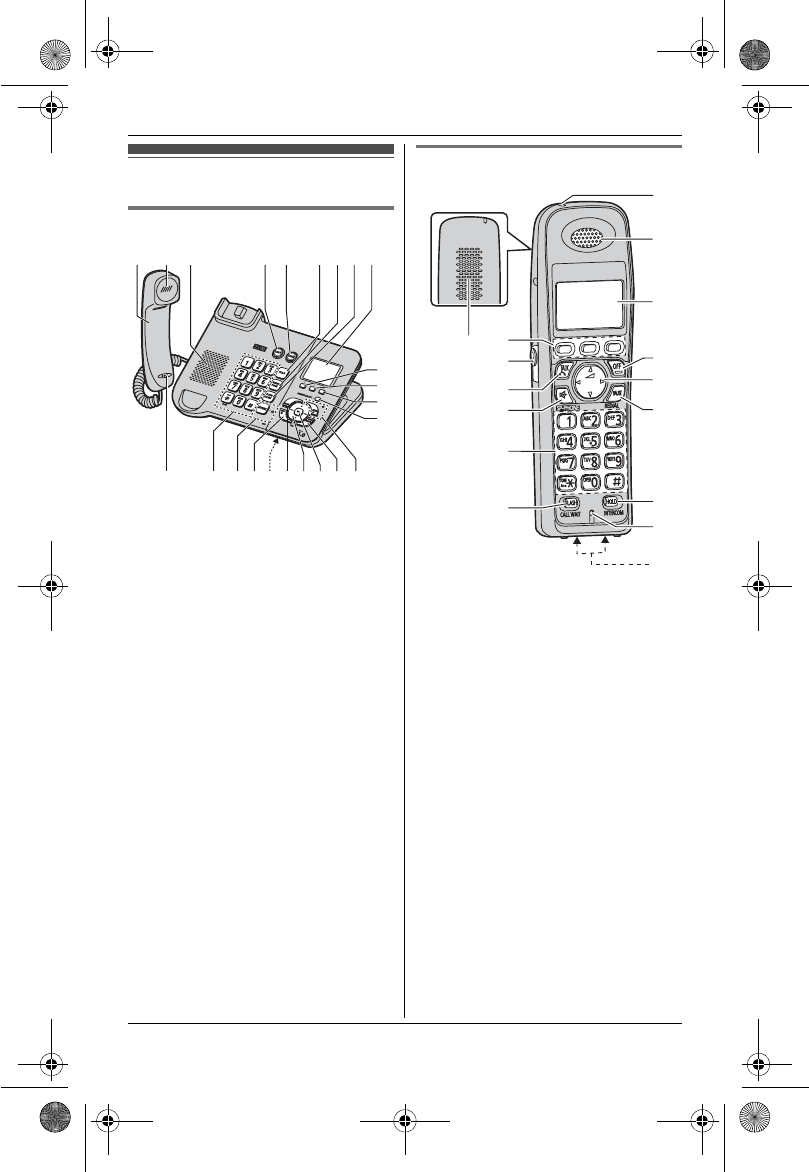
Temporary Confidential
5
Controls
Base unit
A{ERASE}
B{^} (VOL.: Volume up)
{V} (VOL.: Volume down)
{7} (Repeat)
{8} (Skip)
C{6} (Play)
Message indicator
D{ANSWER ON}
E{■} (STOP)
F{LOCATOR}{INTERCOM}
GSpeaker
H{GREETING REC} (Recording)
I{GREETING CHECK}
JMIC (Microphone)
KLINK TO CELL indicator 1, 2
LCellular select {2}
MCellular select {1}
Handset
ASpeaker
BSoft keys
CHeadset jack
D{C} (TALK)
E{s} (SP-PHONE: Speakerphone)
FDial keypad
({*}: TONE)
G{FLASH}{CALL WAIT}
HCharge indicator
Ringer indicator
Message indicator
IReceiver
JDisplay
K{OFF}
LNavigator key ({^}/{V}/{>}/{<})/
? (Receiver volume: {^}/{V})
M{PAUSE}{REDIAL}
N{HOLD}{INTERCOM}
OMicrophone
PCharge contacts
BAC DE HGFI
J
K
L
M
ONPQNRSTU V
A
I
J
L
M
K
H
N
O
P
B
G
F
C
D
E
TG9391_Shinsei.book Page 5 Thursday, April 10, 2008 5:33 PM
A
Corded handset
B
Receiver
C
Speaker
D
{LINE 2}•
E
{LINE 1}•
F
{HOLD}•
G
{REDIAL} {PAUSE}•
H
{FLASH} {CALL WAIT}•
I
Display
J
Soft key
K
Soft key
L
Soft key
M
{LINE SELECT}
N
MIC (Microphone)
O
Dial keypad
({*}: TONE)
P
{SP-PHONE}•
Q
{@} (STOP)
R
{ERASE}•
S
Navigator key ({^}/{V}/{7}/{8
}
)
T
{6} (Play)
Message indicator
U
{LOCATOR} {INTERCOM}•
V
{ANSWER ON}•
ANSWER ON indicator
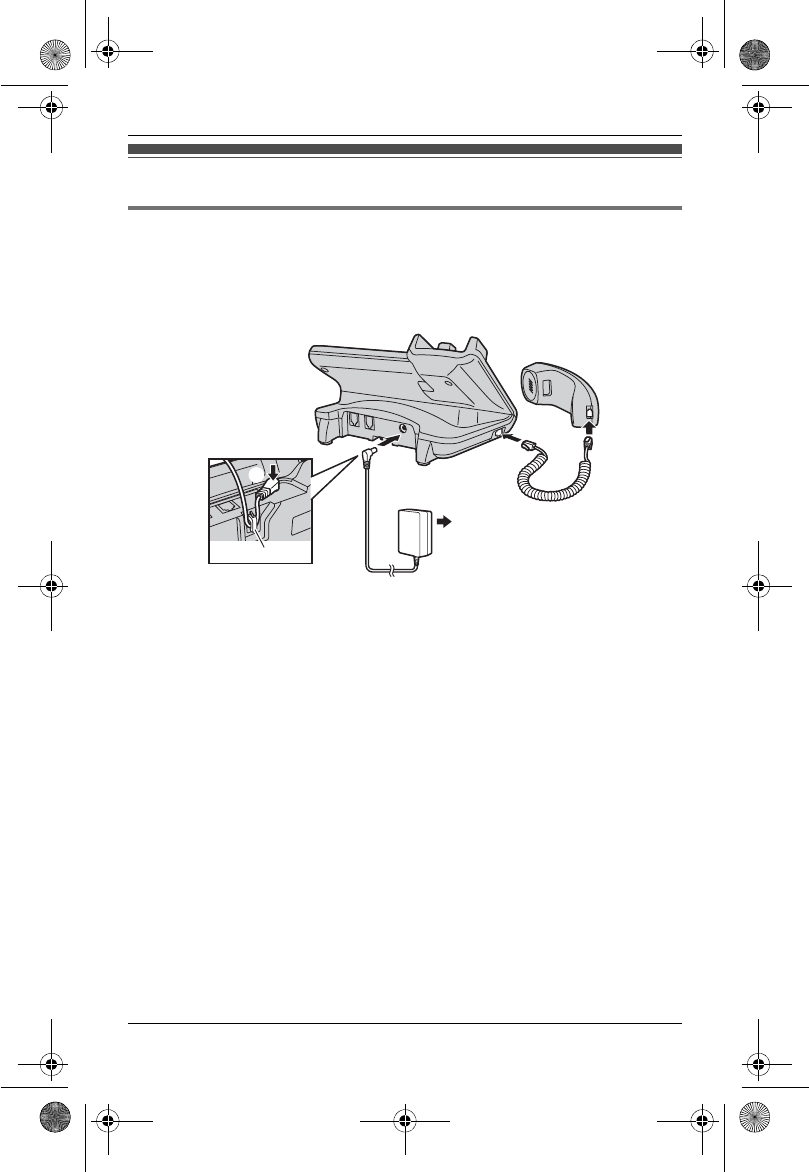
Temporary Confidential
6
Connections
Connecting the AC adaptor
Connect the AC adaptor cord (A) by pressing the plug firmly (B). Connect the
handset cord (C) to the corded handset and the base unit.
l
Base unit
LUse only the supplied Panasonic AC adaptor PQLV207.
LUse only the supplied telephone line cord. Using another telephone line cord may
not allow the unit to work properly.
(120 V AC, 60 Hz)
A
Hook
BCCCCC
TG9391_Shinsei.book Page 6 Thursday, April 10, 2008 5:33 PM
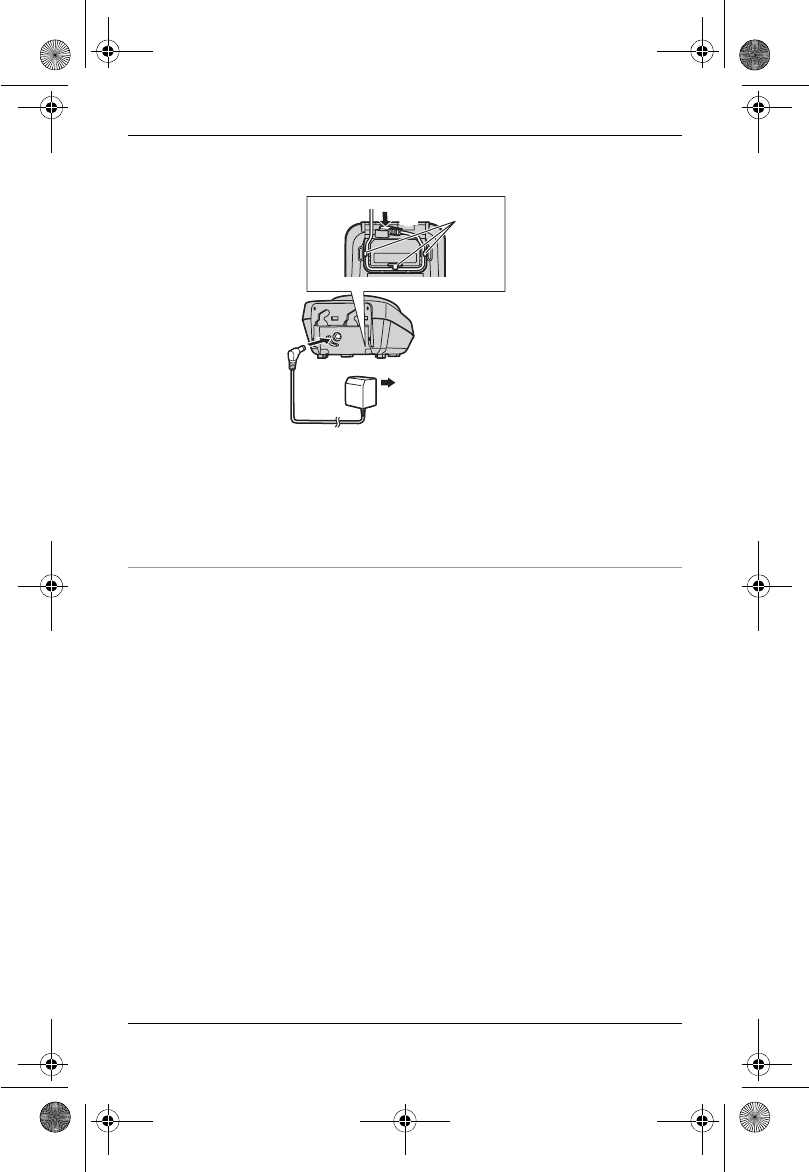
Temporary Confidential
7
Charger
LUse only the supplied Panasonic AC adaptor PQLV209.
Note:
LThe AC adaptor must remain connected at all times. (It is normal for the adaptor to
feel warm during use.)
LThe AC adaptor should be connected to a vertically oriented or floor-mounted AC
outlet. Do not connect the AC adaptor to a ceiling-mounted AC outlet, as the
weight of the adaptor may cause it to become disconnected.
During a power failure
The base unit will work as a standard telephone using power from the telephone line
and you can make or answer outside calls with the corded handset using line 1. You
cannot use the base unit speakerphone and flash feature, and the cordless handset.
Note:
LWe recommend connecting a corded-type telephone (without AC adaptor) to the
same telephone line or to the same telephone jack using a Panasonic
T-adaptor (page xx).
B
(120 V AC, 60 Hz)
Hooks
C
TG9391_Shinsei.book Page 7 Thursday, April 10, 2008 5:33 PM
B
A
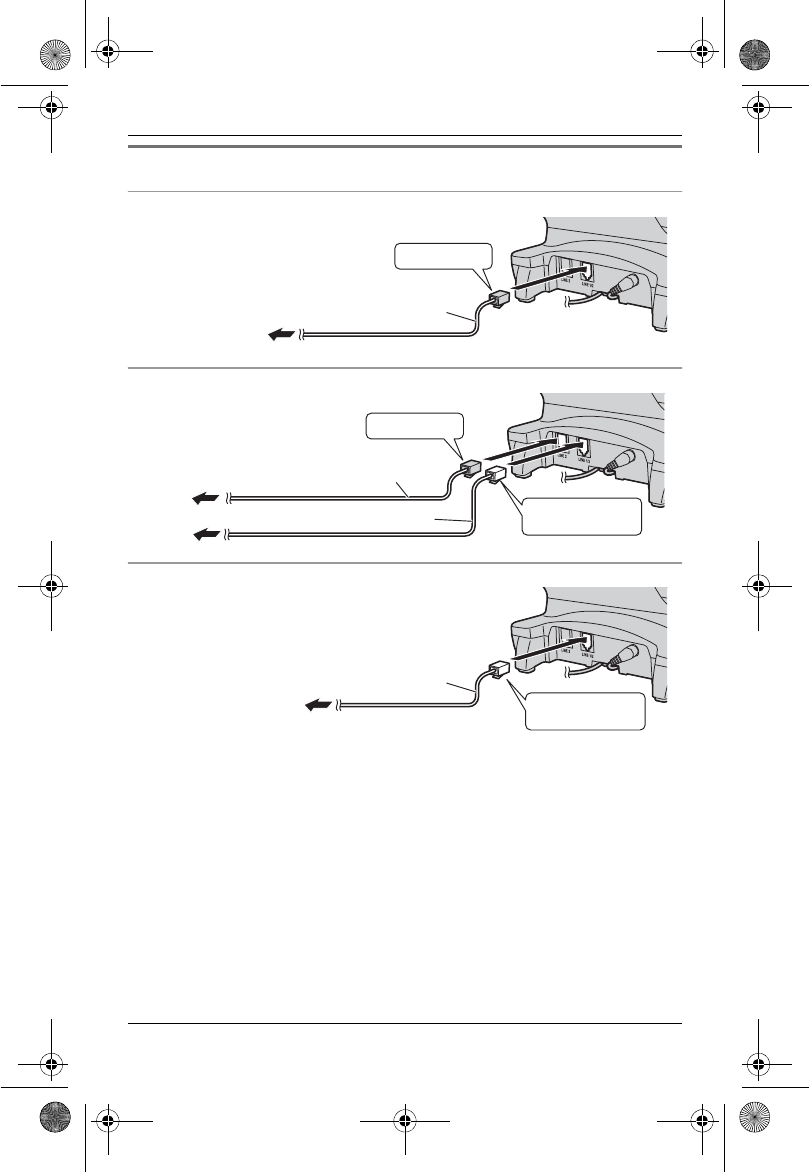
Temporary Confidential
8
Connecting the telephone line cord
To connect to a 2-line telephone jack
To connect to 2 single-line telephone jacks
If you use the unit as a single-line telephone only
4-wire cord
“GREEN” plug
To 2-line telephone
j
ack (RJ14C)
Line 1
Line 2
To single-line telephone
j
acks (RJ11C)
2-wire cord
4-wire cord
“GREEN” plug
“TRANSPARENT”
plug
2-wire cord
“TRANSPARENT”
plug
To single-line
telephone jack (RJ11C)
TG9391_Shinsei.book Page 8 Thursday, April 10, 2008 5:33 PM
L
Use only the supplied telephone line cord. Using another telephone line cord may
not allow the unit to work properly.
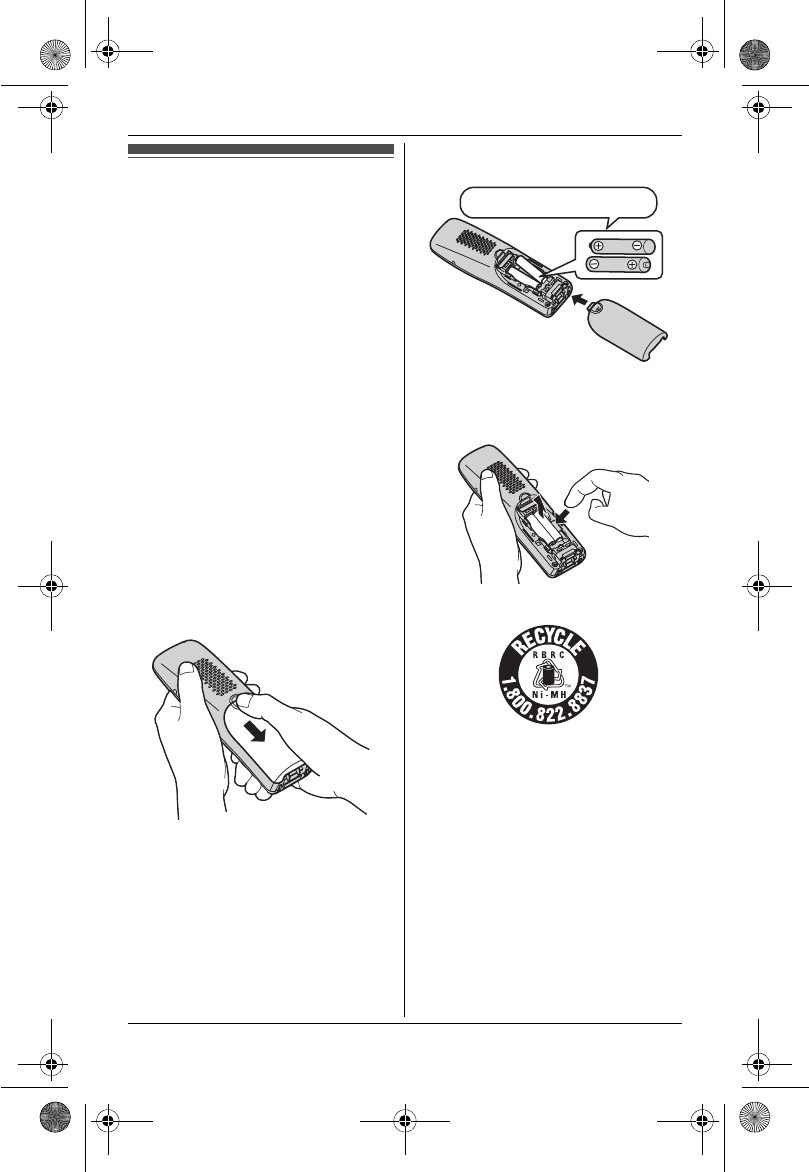
Temporary Confidential
9
Battery installation and
replacement
Important:
LUse the supplied rechargeable
batteries (Part No. HHR-65AAABU).
LWhen installing the batteries:
– Wipe the battery ends (S,T) with
a dry cloth.
– Avoid touching the battery ends
(S,T) or the unit contacts.
– Ensure correct polarities (S,T).
LWhen replacing the batteries:
– USE ONLY rechargeable Ni-MH
batteries AAA (R03) size.
– Do NOT use
Alkaline/Manganese/Ni-Cd
batteries.
– We recommend using the
Panasonic rechargeable batteries.
1Press the notch on the handset
cover firmly, and slide it in the
direction of the arrow.
2Insert the batteries negative (T)
end first. Close the handset cover.
Note:
LWhen replacing batteries, remove the
old batteries.
Attention:
A nickel metal hydride battery that is
recyclable powers the product you have
purchased.
Please call 1-800-8-BATTERY (1-800-
822-8837) for information on how to
recycle this battery.
Rechargeable Ni-MH ONLY
TG9391_Shinsei.book Page 9 Thursday, April 10, 2008 5:33 PM
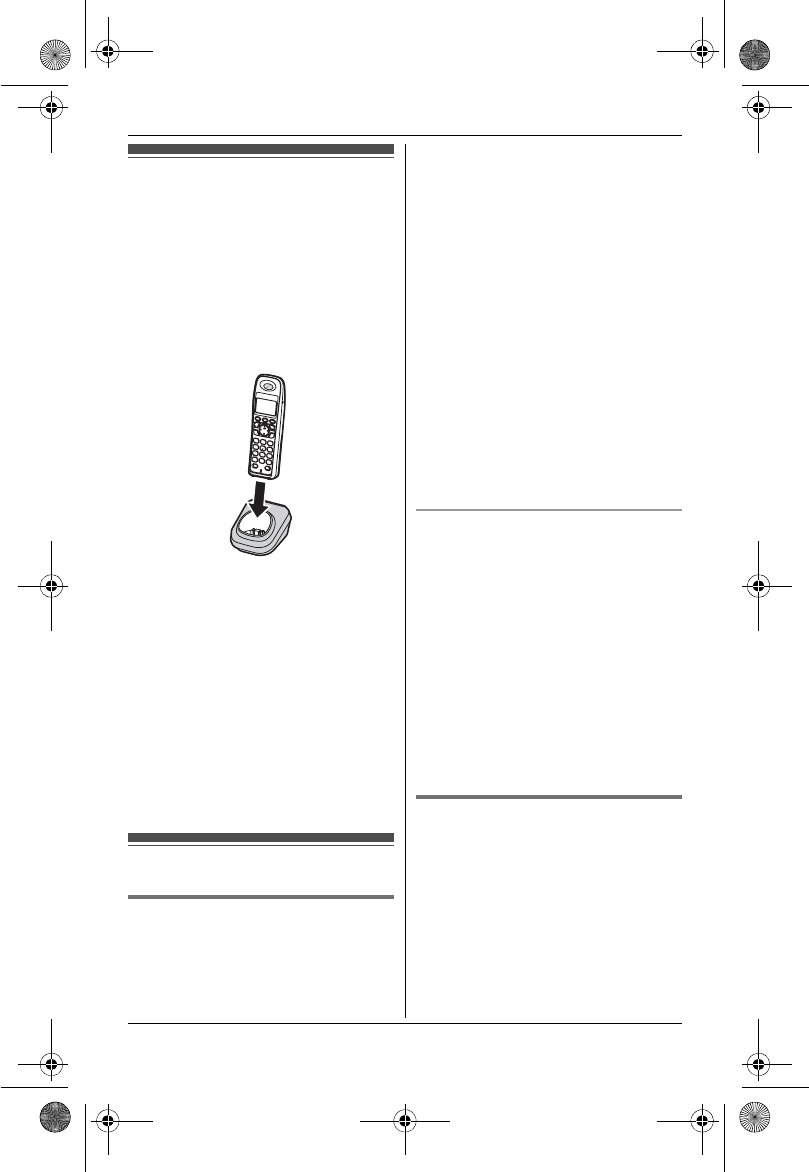
Temporary Confidential
10
Battery charge
Place the handset on the charger for 7
hours before initial use.
LWhile charging, “Charging” is
displayed and the charge indicator on
the handset lights up. When the
batteries are fully charged, “Charge
completed” is displayed.
Note:
LIt is normal for the handset to feel
warm during charging.
LIf you want to use the handset
immediately, charge the batteries for
at least 15 minutes.
LClean the charge contacts of the
handset, and charger with a soft and
dry cloth once a month. Clean more
often if the unit is subject to the
exposure of grease, dust, or high
humidity.
Making calls
Using the base unit
1Dial the phone number.
LTo correct a digit, press {CLEAR}.
o
2Lift the corded handset.
LAn available line is automatically
selected and the line 1 or line 2
indicator lights. Also the line
number is displayed. To change
the line selection mode, see page
xx.
LYou can also select the line
manually by pressing {LINE 1} or
{LINE 2}.
3When you finish talking, place the
corded handset on the cradle.
Note:
LYou can also dial the phone number
after lifting the base unit’s handset.
LTo switch to the cordless handset,
press {LINE 1} or {LINE 2} on the
handset, then place the corded
handset on the cradle.
Speakerphone
1During a conversation, press {SP-
PHONE} to turn on the
speakerphone.
LSpeak alternately with the other
party.
2When you finish talking, press {SP-
PHONE}.
Note:
LUse the speakerphone in a quiet
environment.
LTo switch back to the receiver, lift the
corded handset.
Using the handset
1Lift the handset and dial the phone
number.
LTo correct a digit, press
{CLEAR}.
2{s}
LAn available line is automatically
selected and the line number is
displayed. To change the line
selection mode, see page xx.
TG9391_Shinsei.book Page 10 Thursday, April 10, 2008 5:33 PM
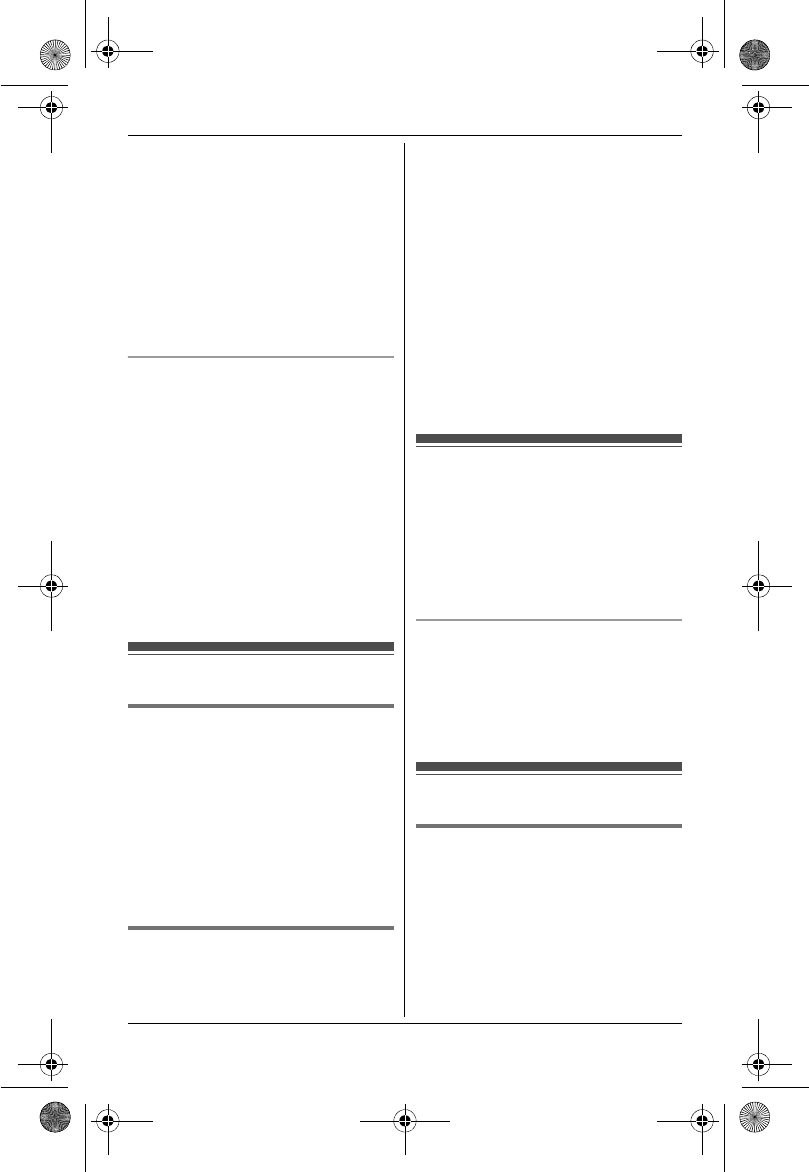
Temporary Confidential
11
LYou can also select the line
manually by pressing {LINE 1} or
{LINE 2}.
3When you finish talking, press
{OFF} or place the handset on the
charger.
Note:
LThe line 1 or line 2 indicator on the
base unit lights while using the
handset.
Speakerphone
1During a conversation, press {s} to
turn on the speakerphone.
LSpeak alternately with the other
party.
2When you finish talking, press
{OFF}.
Note:
LFor best performance, use the
speakerphone in a quiet environment.
LTo switch back to the receiver, press
{C}.
Answering calls
Using the base unit
When a call is being received, the line 1
or line 2 indicator on the base unit
flashes rapidly.
1Lift the corded handset or press
{SP-PHONE} when the unit rings.
2When you finish talking, place the
corded handset on the cradle. If the
speakerphone is used, press {SP-
PHONE}.
Using the handset
When a call is being received, the ringer
indicator flashes rapidly.
1Lift the handset and press {C} or
{s} when the unit rings.
LThe called line is automatically
selected. To change the line
selection mode, see page xx.
LYou can also answer the call by
pressing {LINE 1} or {LINE 2}.
LYou can also answer the call by
pressing any dial key from {0} to
{9},{*}, or {#}. (Any key
answer feature)
2When you finish talking, press
{OFF} or place the handset on the
charger.
Using Caller ID service
Important:
LThis unit is Caller ID compatible. To
use Caller ID features, you must
subscribe to Caller ID service. Contact
your service provider/telephone
company for details.
Caller ID features
When an outside call is being received,
the name and phone number are
displayed.
Caller information for the last 50 callers
is logged in the caller list by the most
recent call to the oldest.
Answering system
Turning the answering system
on
Press {LINE SELECT} repeatedly to
select the desired line(s). i
{ANSWER ON}
LThe ANSWER ON indicator lights up.
TG9391_Shinsei.book Page 11 Thursday, April 10, 2008 5:33 PM
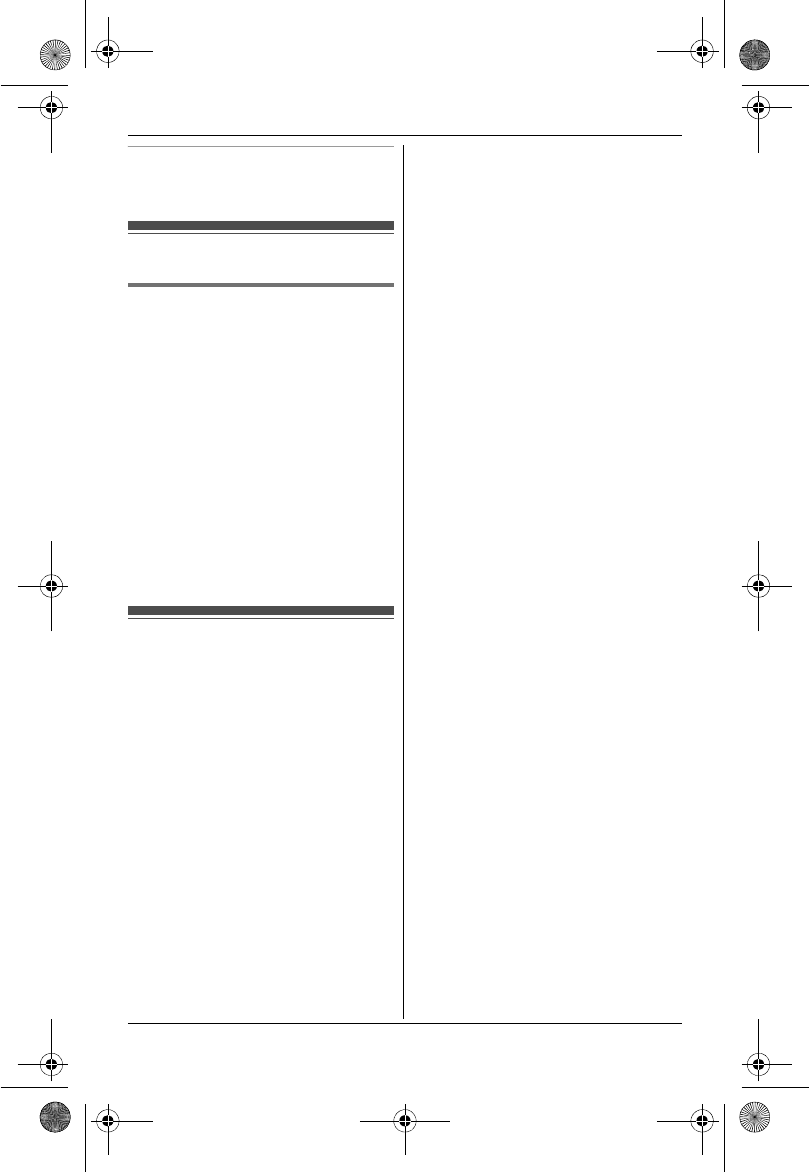
Temporary Confidential
12
Turning the answering system off
{ANSWER ON}
LThe ANSWER ON indicator lights off.
Greeting message
Recording your greeting
message
You can record your own greeting
message (2 minutes max.).
1Press {LINE SELECT} repeatedly
to select the desired line(s).
2{GREETING REC}
3Within 10 seconds, press
{GREETING REC} again.
4After the base unit beeps, speak
clearly about 20 cm (8 inches) away
from the MIC.
5Press {■} (STOP) to stop recording.
Listening to messages
using the base unit
Press {6} (Message).
LIf new messages have been recorded,
the base unit plays back new
messages.
LIf there are no new messages, the
base unit plays back all messages.
TG9391_Shinsei.book Page 12 Thursday, April 10, 2008 5:33 PM
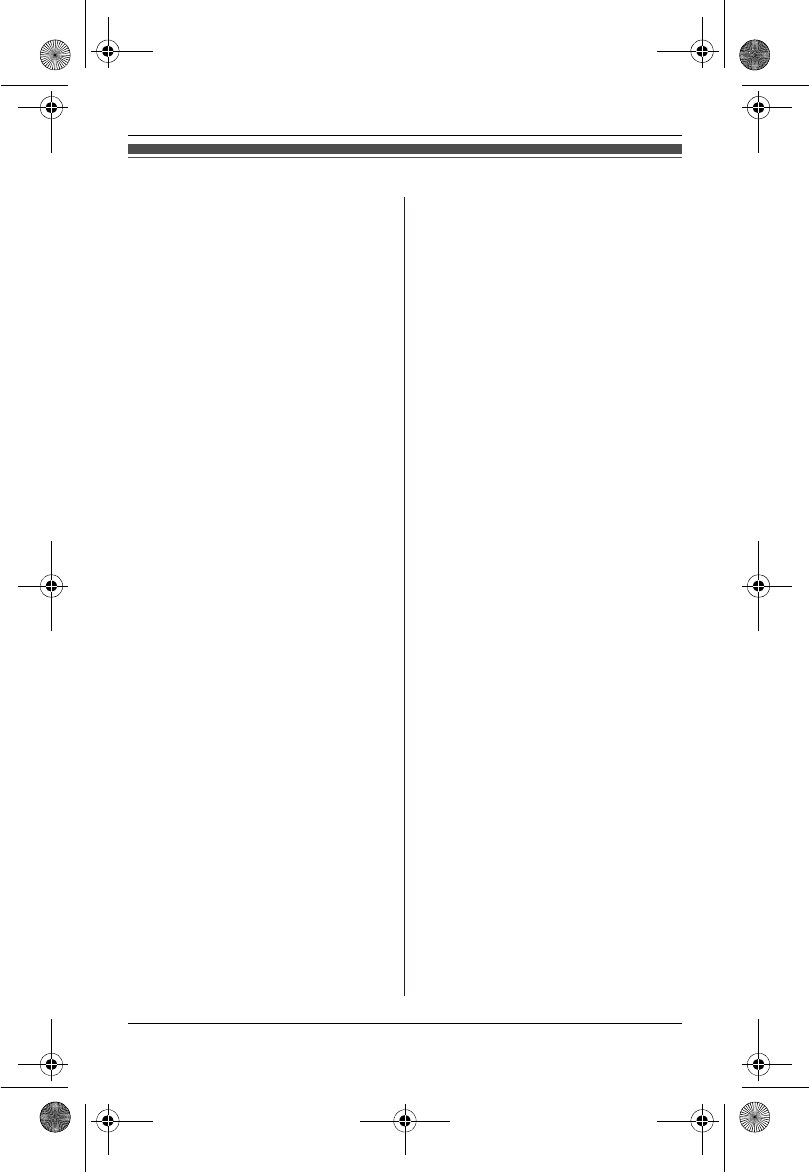
Temporary Confidential
13
FCC and other information
This equipment complies with Part 68
of the FCC rules and the requirements
adopted by the ACTA. On the bottom
of this equipment is a label that
contains, among other information, a
product identifier in the format
US:ACJ----------.
If requested, this number must be
provided to the telephone company.
L Registration No
............(found on the bottom of the
unit)
L Ringer Equivalence No.
(REN).......0.1B (line 1 and line 2)
L Ringer Equivalence No. (REN:
Under a power failure).......1.0B
(line 1)
A plug and jack used to connect this
equipment to the premises wiring and
telephone network must comply with
the applicable FCC Part 68 rules and
requirements adopted by the ACTA. A
compliant telephone cord and modular
plug is provided with the product. It is
designed to be connected to a
compatible modular jack that is also
compliant.
The REN is used to determine the
number of devices that may be
connected to a telephone line.
Excessive RENs on a telephone line
may result in the devices not ringing in
response to an incoming call. In most
but not all areas, the sum of RENs
should not exceed five (5.0). To be
certain of the number of devices that
may be connected to a line, as
determined by the total RENs, contact
the local telephone company. For
products approved after July 23, 2001,
the REN for the product is part of the
product identifier that has the format
US:AAAEQ##TXXXX. The digits
represented by ## are the REN
without a decimal point (e.g., 03 is a
REN of 0.3).
If this equipment causes harm to the
telephone network, the telephone
company will notify you in advance
that temporary discontinuance of
service may be required. But if
advance notice isn't practical, the
telephone company will notify the
customer as soon as possible. Also,
you will be advised of your right to file
a complaint with the FCC if you
believe it is necessary.
The telephone company may make
changes in its facilities, equipment,
operations or procedures that could
affect the operation of the equipment.
If this happens the telephone company
will provide advance notice in order for
you to make necessary modifications
to maintain uninterrupted service.
If trouble is experienced with this
equipment, for repair or warranty
information, please contact a Factory
Service Center or other Authorized
Servicer. If the equipment is causing
harm to the telephone network, the
telephone company may request that
you disconnect the equipment until the
problem is resolved.
Connection to party line service is
subject to state tariffs. Contact the
state public utility commission, public
service commission or corporation
commission for information.
If your home has specially wired alarm
equipment connected to the telephone
TG9391_Shinsei.book Page 13 Thursday, April 10, 2008 5:33 PM
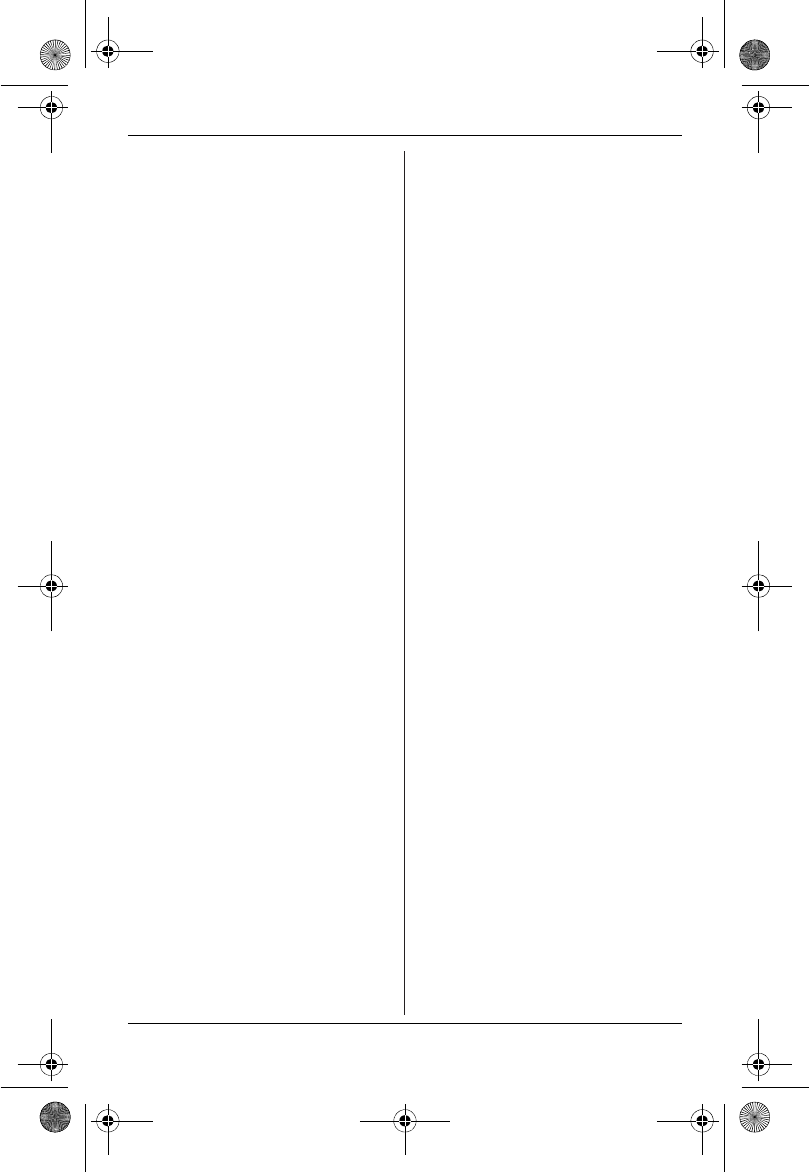
Temporary Confidential
14
line, ensure the installation of this
equipment does not disable your
alarm equipment. If you have
questions about what will disable
alarm equipment, consult your
telephone company or a qualified
installer.
This equipment is hearing aid
compatible as defined by the FCC in
47 CFR Section 68.316.
When you hold the phone to your ear,
noise might be heard in your Hearing
Aid. Some Hearing Aids are not
adequately shielded from external RF
(radio frequency) energy. If noise
occurs, use an optional headset
accessory or the speakerphone option
(if applicable) when using this phone.
Consult with your audiologist or
Hearing Aid manufacturer about the
availability of Hearing Aids which
provide adequate shielding to RF
energy commonly emitted by digital
devices.
WHEN PROGRAMMING
EMERGENCY NUMBERS AND(OR)
MAKING TEST CALLS TO
EMERGENCY NUMBERS:
1) Remain on the line and briefly
explain to the dispatcher the reason
for the call.
2) Perform such activities in the off-
peak hours, such as early morning
or late evenings.
This device complies with Part 15 of
the FCC Rules. Operation is subject to
the following two conditions:
(1) This device may not cause harmful
interference, and (2) this device must
accept any interference received,
including interference that may cause
undesired operation.
Privacy of communications may not
be ensured when using this phone.
CAUTION:
Any changes or modifications not
expressly approved by the party
responsible for compliance could void
the user’s authority to operate this
device.
NOTE:
This equipment has been tested and
found to comply with the limits for a
Class B digital device, pursuant to Part
15 of the FCC Rules. These limits are
designed to provide reasonable
protection against harmful interference
in a residential installation. This
equipment generates, uses, and can
radiate radio frequency energy and, if
not installed and used in accordance
with the instructions, may cause
harmful interference to radio
communications. However, there is no
guarantee that interference will not
occur in a particular installation. If this
equipment does cause harmful
interference to radio or television
reception, which can be determined by
turning the equipment off and on, the
user is encouraged to try to correct the
interference by one or more of the
following measures:
– Reorient or relocate the receiving
antenna.
– Increase the separation between the
equipment and receiver.
– Connect the equipment into an outlet
on a circuit different from that to
which the receiver is connected.
– Consult the dealer or an experienced
radio/TV technician for help.
Some cordless telephones operate at
frequencies that may cause
interference to nearby TVs and VCRs.
To minimize or prevent such
interference, the base of the cordless
telephone should not be placed near
or on top of a TV or VCR. If
TG9391_Shinsei.book Page 14 Thursday, April 10, 2008 5:33 PM
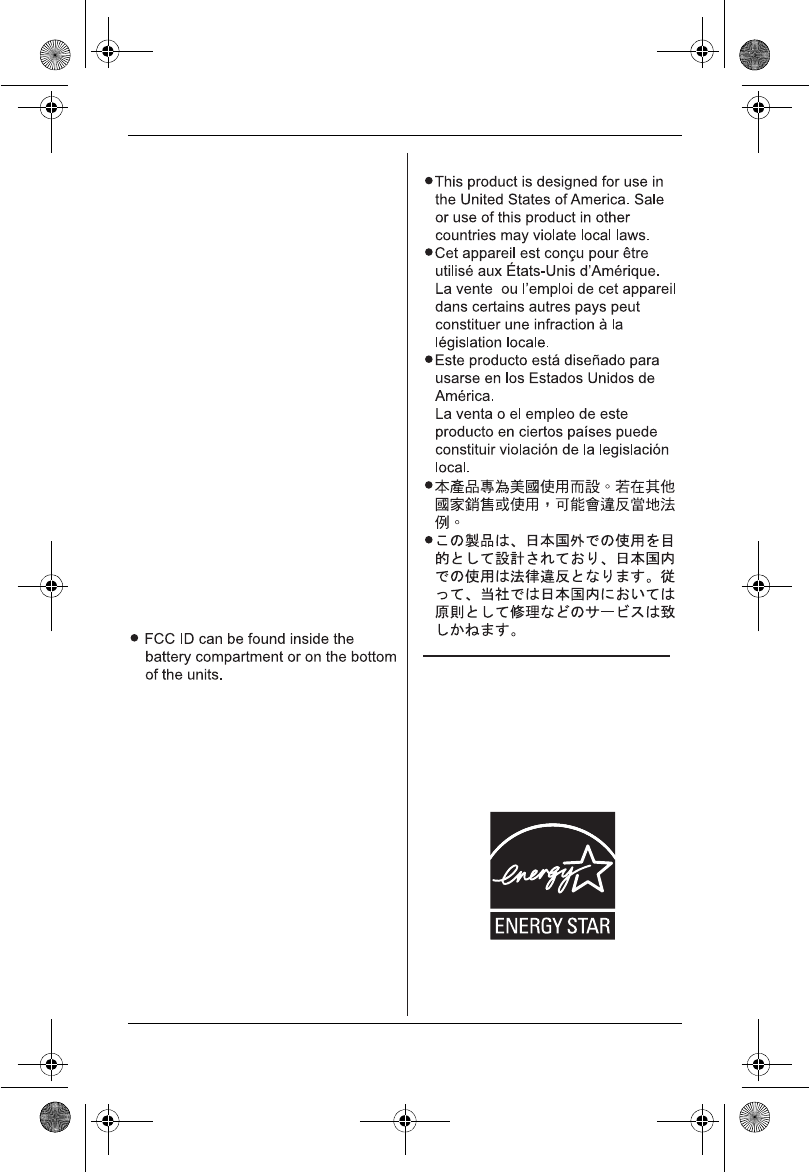
Temporary Confidential
15
interference is experienced, move the
cordless telephone further away from
the TV or VCR. This will often reduce,
or eliminate, interference.
FCC RF Exposure Warning:
L This product complies with FCC
radiation exposure limits set forth for
an uncontrolled environment.
L To comply with FCC RF exposure
requirements, the base unit must be
installed and operated 20 cm (8
inches) or more between the
product and all person’s body
(excluding extremities of hands,
wrist and feet).
L This product may not be collocated
or operated in conjunction with any
other antenna or transmitter.
L The handset may be carried and
operated with only the specific
provided belt-clip. Other non-tested
belt-clips or similar body-worn
accessories may not comply and
must be avoided.
Notice
Notice
ENERGY STAR
As an ENERGY STAR® Participant,
Panasonic has determined that this
product meets the ENERGY STAR
guidelines for energy efficiency.
ENERGY STAR is a U.S. registered
mark.
TG9391_Shinsei.book Page 15 Thursday, April 10, 2008 5:33 PM

Temporary Confidential
If you need assistance with setup or operation
1. Visit our website: http://www.panasonic.com/help
2. Contact us via the web at: http://www.panasonic.com/contactinfo
3. Call us at: 1-800-211-PANA (1-800-211-7262)
TTY users (hearing or speech impaired users) can call 1-877-833-8855.
When you ship the product
LCarefully pack your unit, preferably in the original carton.
LAttach a letter, detailing the symptom.
LSend the unit to PSTC (Panasonic) Exchange Center, prepaid and
adequately insured.
LDo not send your unit to Panasonic Consumer Electronics Company listed below
or to executive or regional sales offices. These locations do not repair consumer
products.
Panasonic Consumer Electronics Company,
Division of Panasonic Corporation of North America
One Panasonic Way, Secaucus, New Jersey 07094
Panasonic Puerto Rico, Inc.
San Gabriel Industrial Park, Ave. 65 de Infantería, Km. 9.5,
Carolina, Puerto Rico 00985
Copyright:
This material is copyrighted by Panasonic Communications Co., Ltd., and may be
reproduced for internal use only. All other reproduction, in whole or in part, is
prohibited without the written consent of Panasonic Communications Co., Ltd.
© 2008 Panasonic Communications Co., Ltd. All Rights Reserved.
TG9391_Shinsei.book Page 100 Thursday, April 10, 2008 5:33 PM